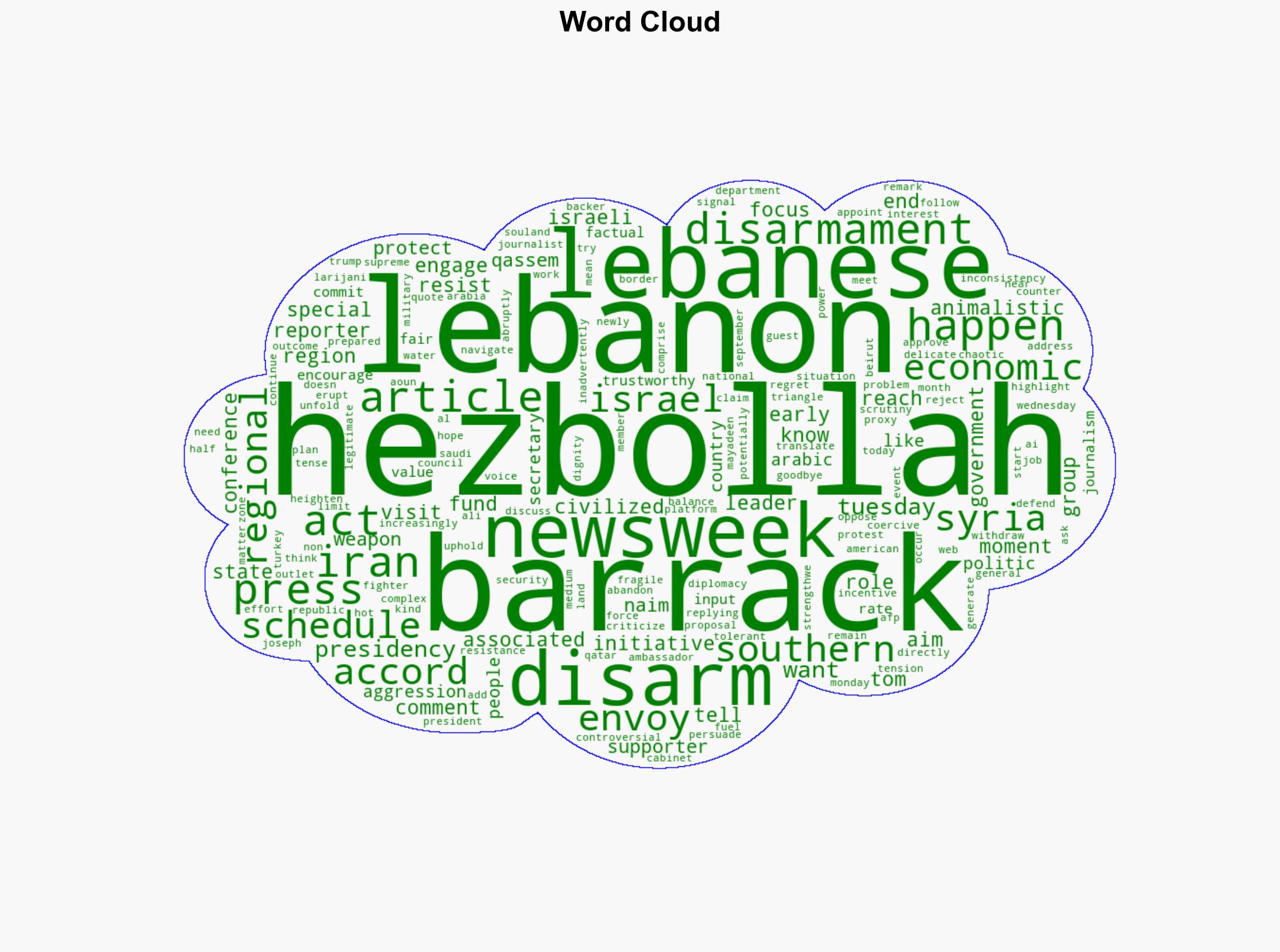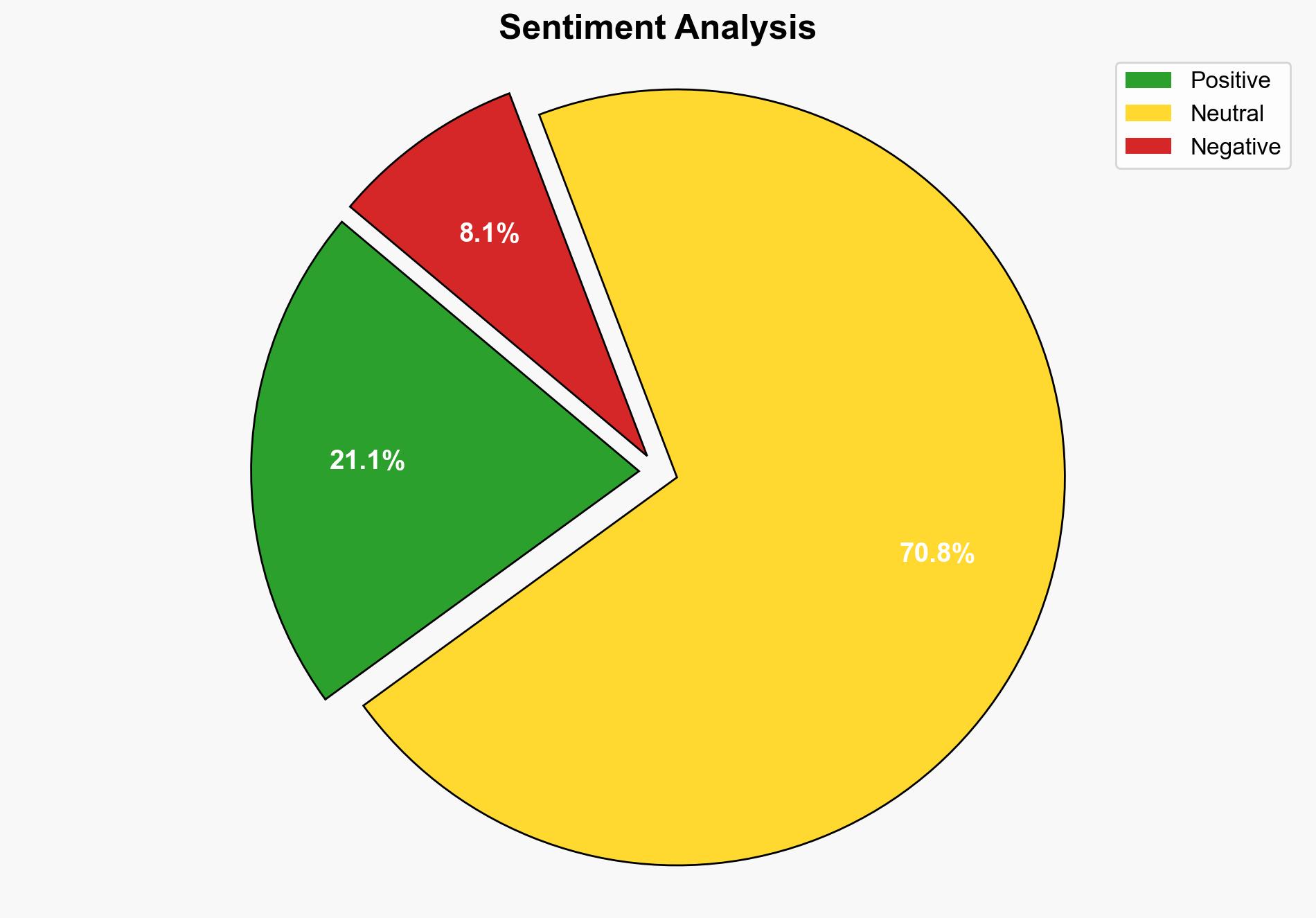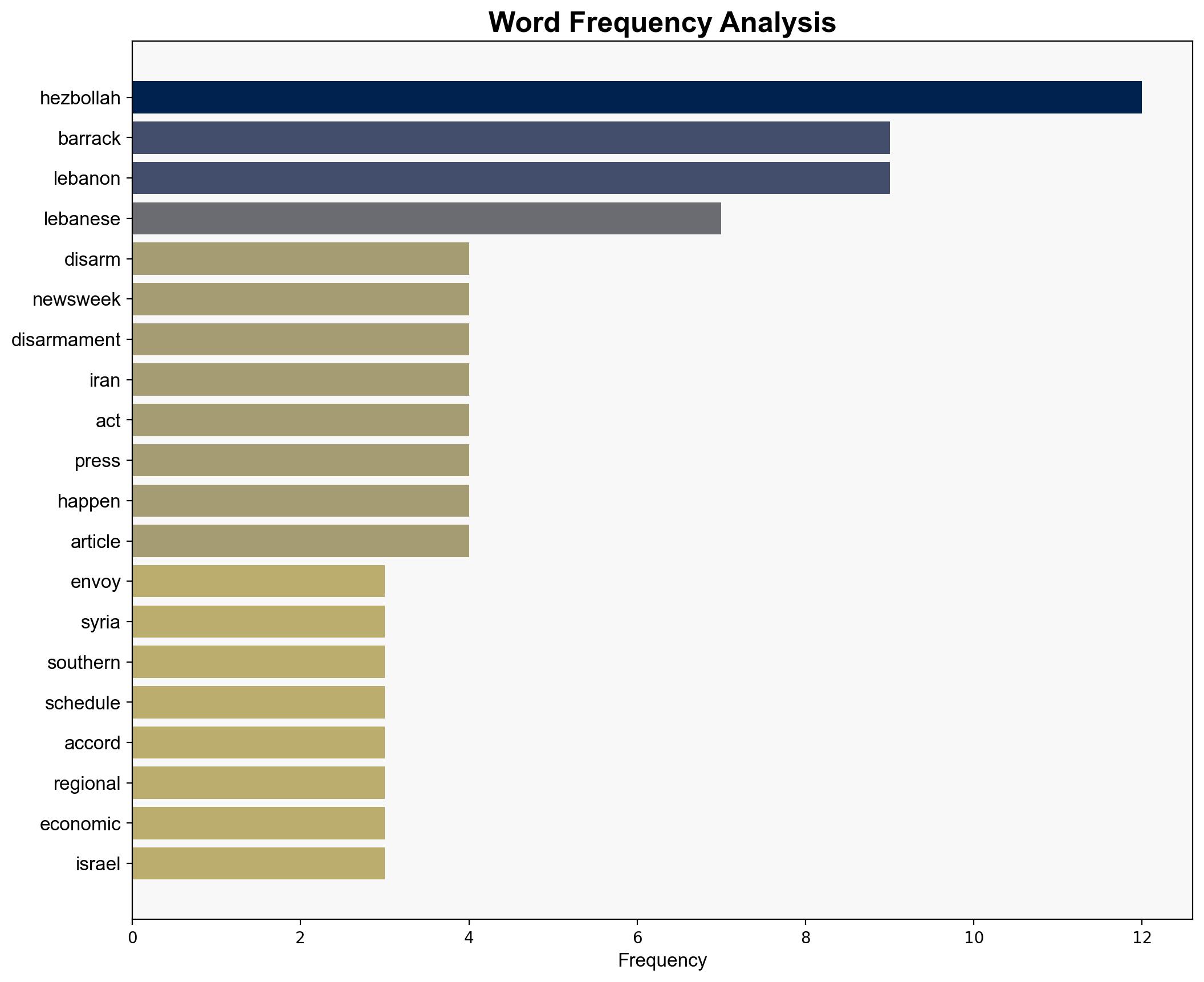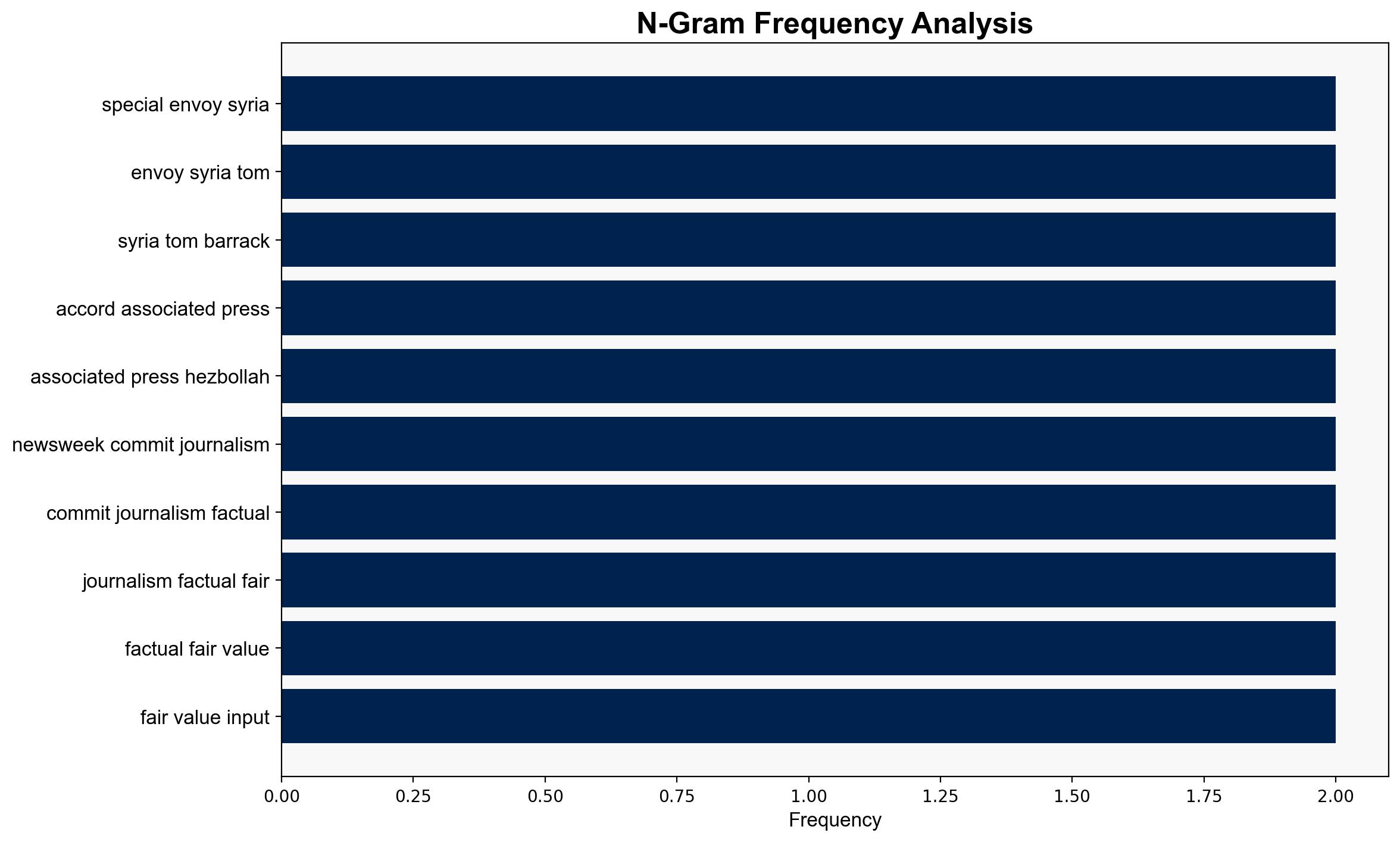New Trump Envoy Lands in Hot Water in Middle East – Newsweek
Published on: 2025-08-27
Intelligence Report: New Trump Envoy Lands in Hot Water in Middle East – Newsweek
1. BLUF (Bottom Line Up Front)
The situation involving Tom Barrack’s diplomatic efforts in Lebanon is precarious, with significant resistance from Hezbollah against disarmament initiatives. The most supported hypothesis is that Barrack’s approach may inadvertently strengthen Hezbollah’s resolve rather than weaken it. Confidence level: Moderate. Recommended action: Reassess diplomatic strategies to engage Hezbollah more effectively, potentially through indirect channels or third-party mediators.
2. Competing Hypotheses
1. **Hypothesis A**: Barrack’s diplomatic efforts will lead to a reduction in Hezbollah’s military capabilities through economic incentives and regional cooperation.
– **Supporting Evidence**: Barrack’s proposal includes economic zones funded by Saudi Arabia and Qatar, aimed at providing jobs and reducing Hezbollah’s reliance on military means.
2. **Hypothesis B**: Barrack’s efforts will exacerbate tensions, leading to increased Hezbollah resistance and regional instability.
– **Supporting Evidence**: Hezbollah’s outright rejection of disarmament, combined with Barrack’s controversial comments, may fuel further resistance and complicate diplomatic relations.
Using ACH 2.0, Hypothesis B is better supported due to Hezbollah’s strong opposition and the potential for Barrack’s comments to undermine diplomatic efforts.
3. Key Assumptions and Red Flags
– **Assumptions**:
– Economic incentives can effectively persuade Hezbollah to disarm.
– Regional actors like Saudi Arabia and Qatar will maintain their commitment to funding initiatives.
– **Red Flags**:
– Hezbollah’s historical resistance to disarmament.
– Barrack’s controversial remarks may indicate a lack of cultural sensitivity or understanding of regional dynamics.
– **Blind Spots**:
– Potential Iranian countermeasures to maintain Hezbollah’s military capabilities.
– Insufficient consideration of internal Lebanese political dynamics.
4. Implications and Strategic Risks
– **Patterns**: Continued resistance from Hezbollah could lead to increased tensions in the Lebanon-Israel-Syria triangle.
– **Cascading Threats**: Failure to disarm Hezbollah may embolden other proxy groups in the region.
– **Potential Escalation**: Missteps in diplomacy could lead to military confrontations or increased Iranian influence.
– **Economic Risks**: Instability could deter investment in proposed economic zones, undermining their effectiveness.
5. Recommendations and Outlook
- Reevaluate diplomatic messaging to avoid inflammatory rhetoric and engage with Hezbollah through intermediaries.
- Enhance intelligence on Hezbollah’s internal dynamics to identify potential leverage points.
- Scenario Projections:
– **Best Case**: Successful engagement leads to partial disarmament and economic development.
– **Worst Case**: Increased tensions result in military conflict and regional destabilization.
– **Most Likely**: Continued stalemate with periodic escalations in rhetoric and minor skirmishes.
6. Key Individuals and Entities
– Tom Barrack
– Joseph Aoun
– Naim Qassem
– Ali Larijani
7. Thematic Tags
national security threats, regional diplomacy, Middle East stability, Hezbollah, economic incentives





